52% of employees have experienced or witnessed harassment in the workplace. Get the latest data and insights into critical areas that need to be addressed to ensure a healthy, safe work environment.
Download the insights – no form required.
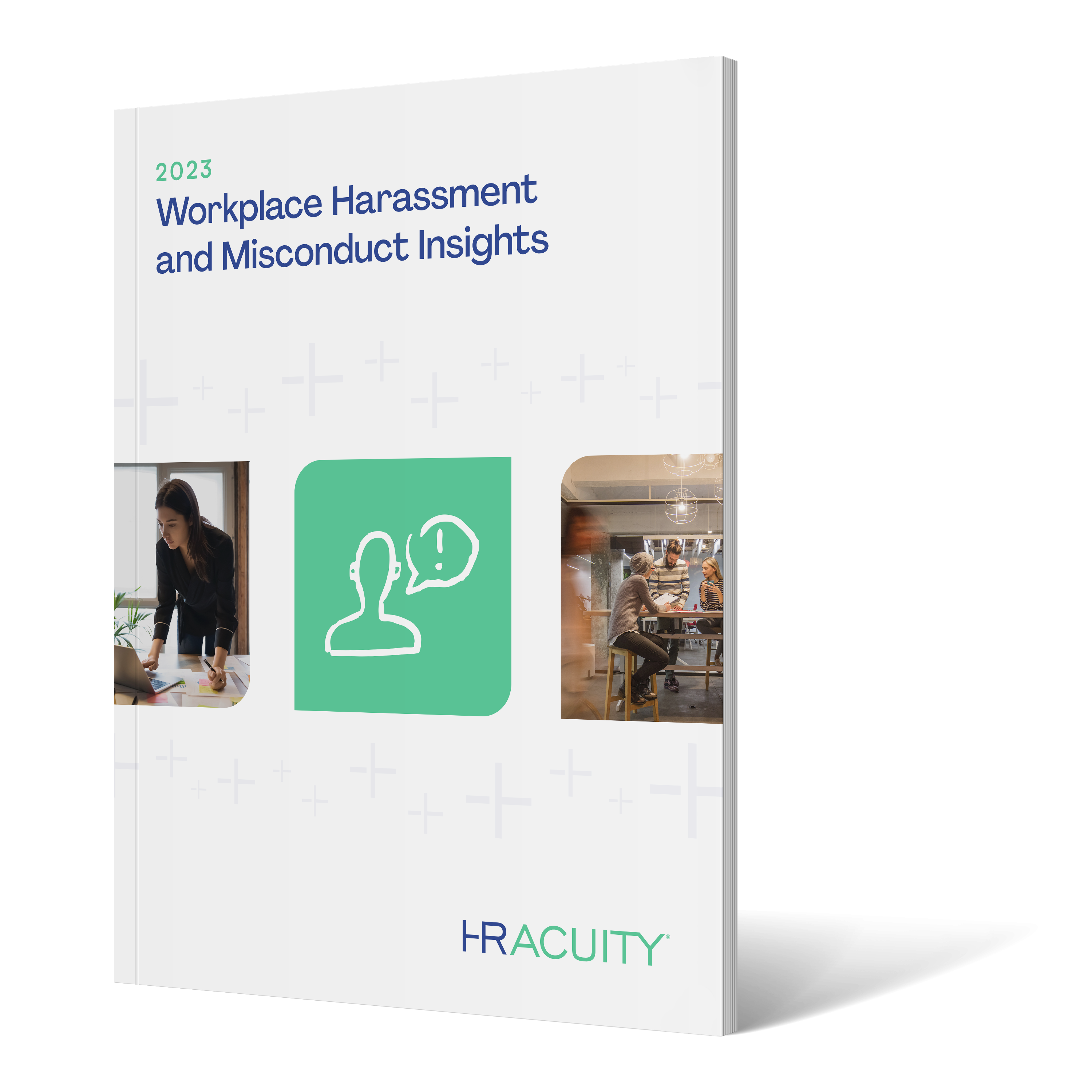
Workplace harassment and misconduct affect 52% of employees. This significantly impacts the entire employee experience, which in turn influences employee retention, organizational reputation and employment brand.
This year, we surveyed nearly 2,000 U.S. employees across various industries, organization sizes and demographics to conduct the 2023 Workplace Harassment & Misconduct Insights study. The findings are indisputable – and demonstrate the value of consistent processes, clear communication, thorough investigations and well-defined aftercare to support employees and create a healthy workplace culture.
This page shares the findings from the 2023 Workplace Harassment & Misconduct Insights, so you, too, can join us to commit to creating a safer, fairer and better workplace for all employees. Let’s take a closer look.
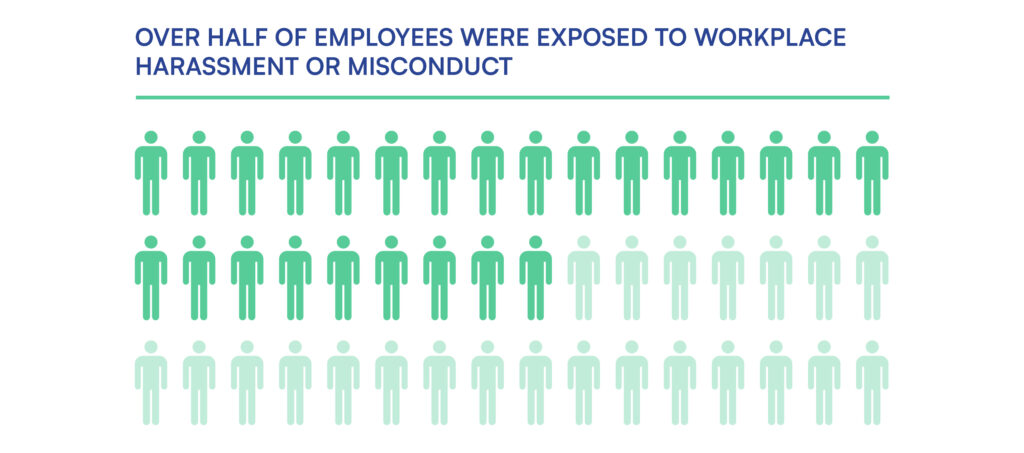
This should never be tolerated in the workplace. Organizations must enforce strong policies and procedures to prevent and manage these issues.
Certain behaviors were also more prevalent within varying office environments, as well as for specific demographics and job levels. Let’s take a closer look.
Of all the workplace settings, it’s no surprise that the in-office environment is where most employees observed or experienced inappropriate, illegal or unethical behaviors (80%).
As workplace environments continue to evolve (as many implement hybrid models or commit to being fully remote), organizations must establish clear policies that address inappropriate behavior and code of conduct for all environments.
Depending on gender, age and race, some groups face more challenges than others within the workplace.

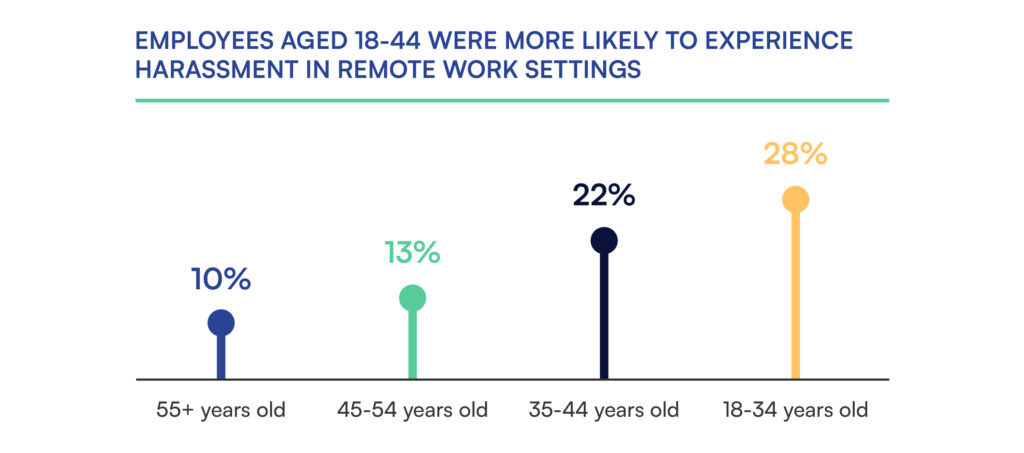
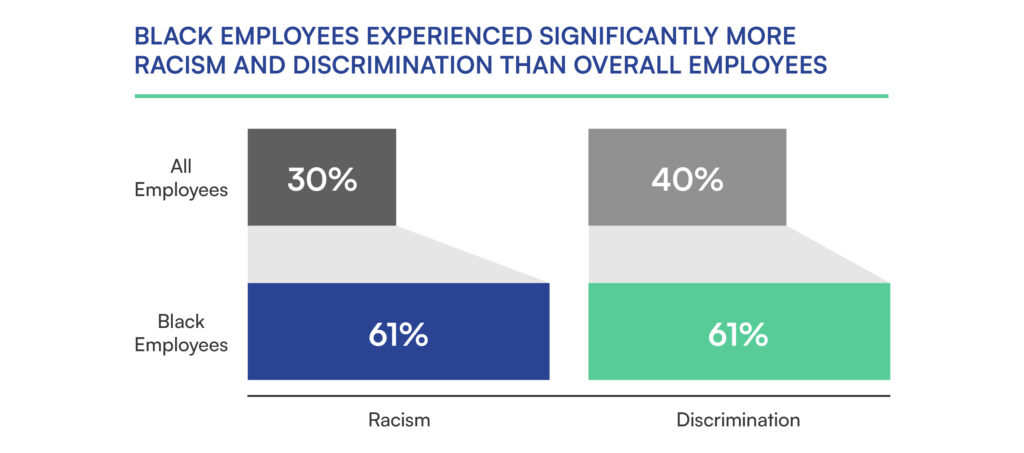
Job level and position can also influence an employee’s experience of harassment and misconduct at work. For example, managers and independent contractors were more likely to have been impacted at work events outside of the office. Contractors were also more likely to experience harassment or discrimination when working remotely.
Certain negative workplace behaviors are more common than others. 51% of employees have experienced or witnessed workplace bullying. Such harmful conduct in professional settings can be detrimental to employee well-being and decrease productivity. Additionally, 40% of employees have experienced or witnessed discrimination and sexual harassment at work, which can threaten employee safety. The prevalence of these damaging workplace issues emphasizes the urgent need for proactive measures to address these issues and create safer work environments.
In 2023, only 58% of employees reported the poor behaviors they experienced or witnessed, meaning that 42% of inappropriate workplace behaviors were not reported. This is down 6% from 2019 – and reveals a growing blind spot of unreported incidents for organizations.
There are a multitude of reasons why employees fail to report workplace issues, but it often boils down to a lack of comfortability, lack of trust, fear of retaliation and more. In fact, nearly half (46%) of employees fear retaliation if they reported concerns.
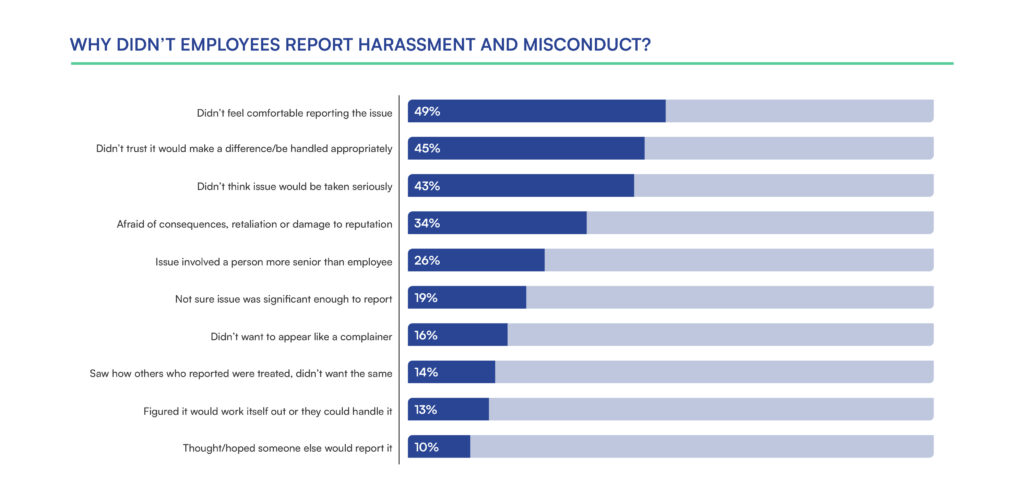
Organizations must show employees their commitment to addressing and preventing inappropriate behaviors. One way to do this effectively is to offer anonymous issue reporting, which allows employees to come forward without sharing their identity. It’s also important to share aggregated outcomes with employees. By committing to your employee safety, it will build employee trust and ultimately lead a more accurate view into workplace issues.
How do employees feel about the way their organization handles workplace issues and investigations? 40% have little confidence in their employer’s approach to addressing such concerns.
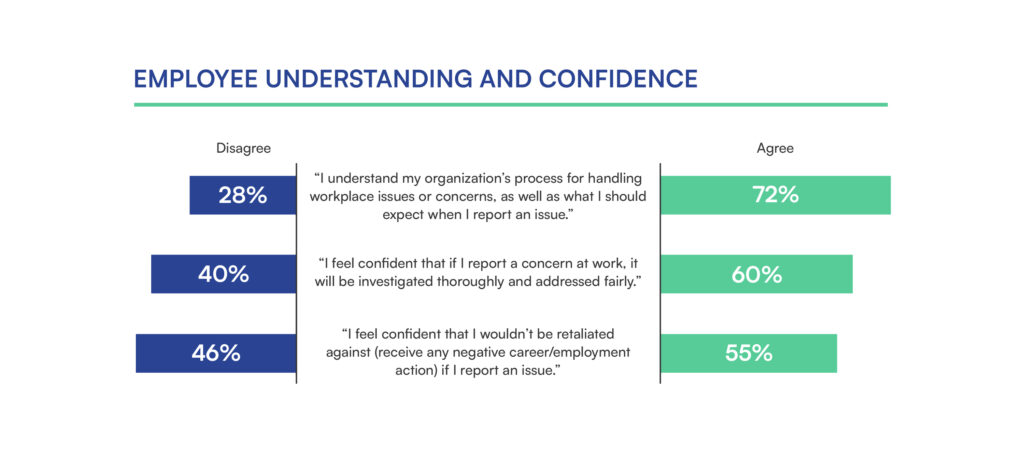
Employers must demonstrate their commitment to reduce workplace harassment by providing clear communication regarding the processes they have in place to address and manage issues. They also need to conduct thorough, consistent investigations to make informed decisions and encourage employee trust.
Interestingly, issue resolutions from investigations have declined from 70% in 2019 to 63% in 2023, which shows there is room for improvement there.
But fortunately, 74% of employees involved in a workplace investigation felt they were treated with dignity and respect, received timely responses and had good communication throughout the process.
However, 39% of employees cited a lack of communication and 42% lacked understanding of what to expect – which signifies a large number of organizations that need to improve their processes and communication.
A critical component of the investigation process is aftercare. Prioritizing aftercare within the issue resolution process ensures employees feel heard and can move past the issue, therefore keeping them engaged and productive. A lack of aftercare can cause unresolved emotional issues to fester and negatively impact employee engagement, productivity, morale and even retention.
Employees deserve to receive ample follow-up and care following an investigation. This includes sharing the outcome of an investigation with involved employees. Yet only 1/3 of employees said the investigation outcome was shared with them. And nearly 3/4 of employees (73%) were not monitored for signs of retaliation afterward.
There is a strong connection between workplace issues, how your organization responds and workplace culture. How organizations address workplace harassment and misconduct matters as much as their efforts to prevent it. If done haphazardly, it can damage employee loyalty and put an organization at risk.
Employees should feel safe (and happy) at work – and comfortable to come forward with issues. If they don’t trust how your organization is going to handle the issue, they are less likely to remain engaged.
One way to measure the satisfaction of employees is through referrals. When you have a satisfied workforce, employees are your biggest advocates.
When a fellow coworker faced a workplace issue, 31% of employees said they were likely to refer their peers to HR. This number increases when employees had positive experiences with HR/ER – and decreases when employees had negative experiences. And 65% of employees who reported issues that were investigated and resolved said they would likely refer colleagues to HR. Only 19% of employees would do so when their issues were mismanaged.
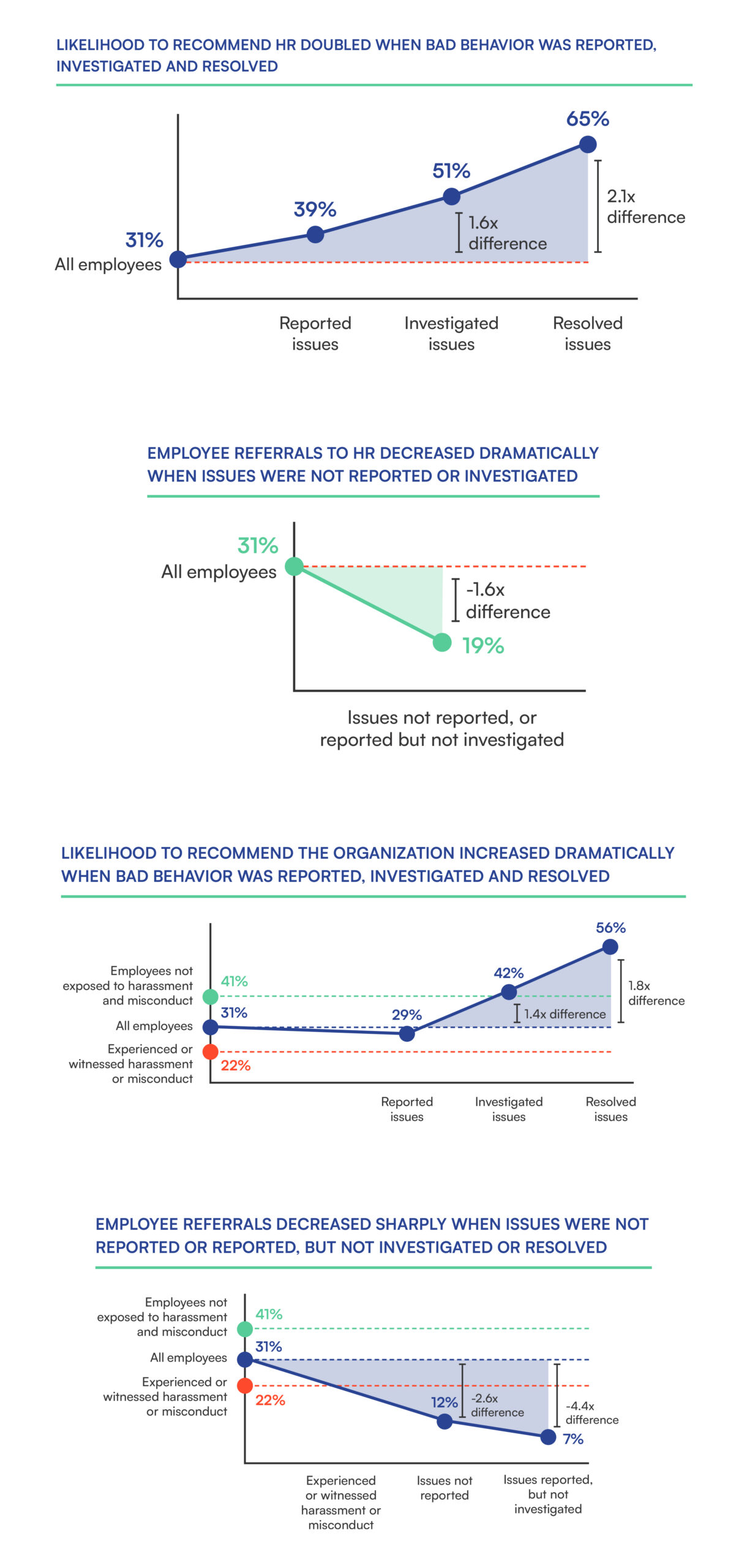
How organizations handle harassment and misconduct can make or break employee trust, loyalty and advocacy. Poor issue handling sends a message that the employer does not take concerns seriously and can drive employees to leave.
In fact, 57% of employees cited harassment or misconduct as the reason they left or a factor in their decision. And 30% of employees who experienced or witnessed inappropriate, unethical or illegal behaviors left the organization following the incident, compared to only 11% of employees who were not exposed to harassment or misconduct.
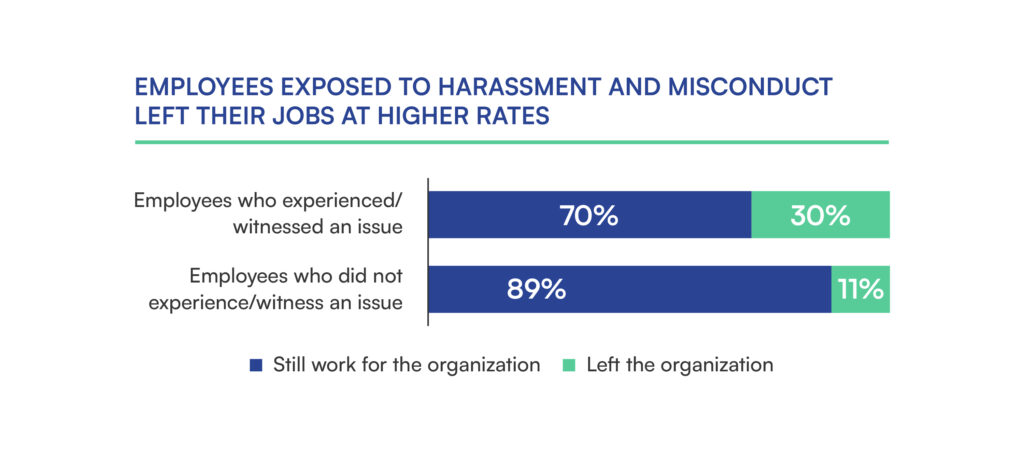
Download the 2023 Workplace Harassment and Misconduct Insights today.
Attend the Webinar:
Dive into Data How to Shape Safe Workplaces
How common are harassment and misconduct in the workplace? How does it really impact your organization? And what can you do to prevent such harmful behavior?
Watch HR Acuity CEO, Deb Muller, and Chief People Officer, Rebecca Trotsky, delve into the top three crucial findings from the 2023 Workplace Harassment & Employee Misconduct Insights in a webinar recorded live on August 23, 2023.


See why we're the
in Employee Relations Case Management
With our award-winning employee case management software, we are helping companies like yours become more efficient, organized and transparent.
With our award-winning employee case management software, we are helping companies like yours become more efficient, organized and transparent.
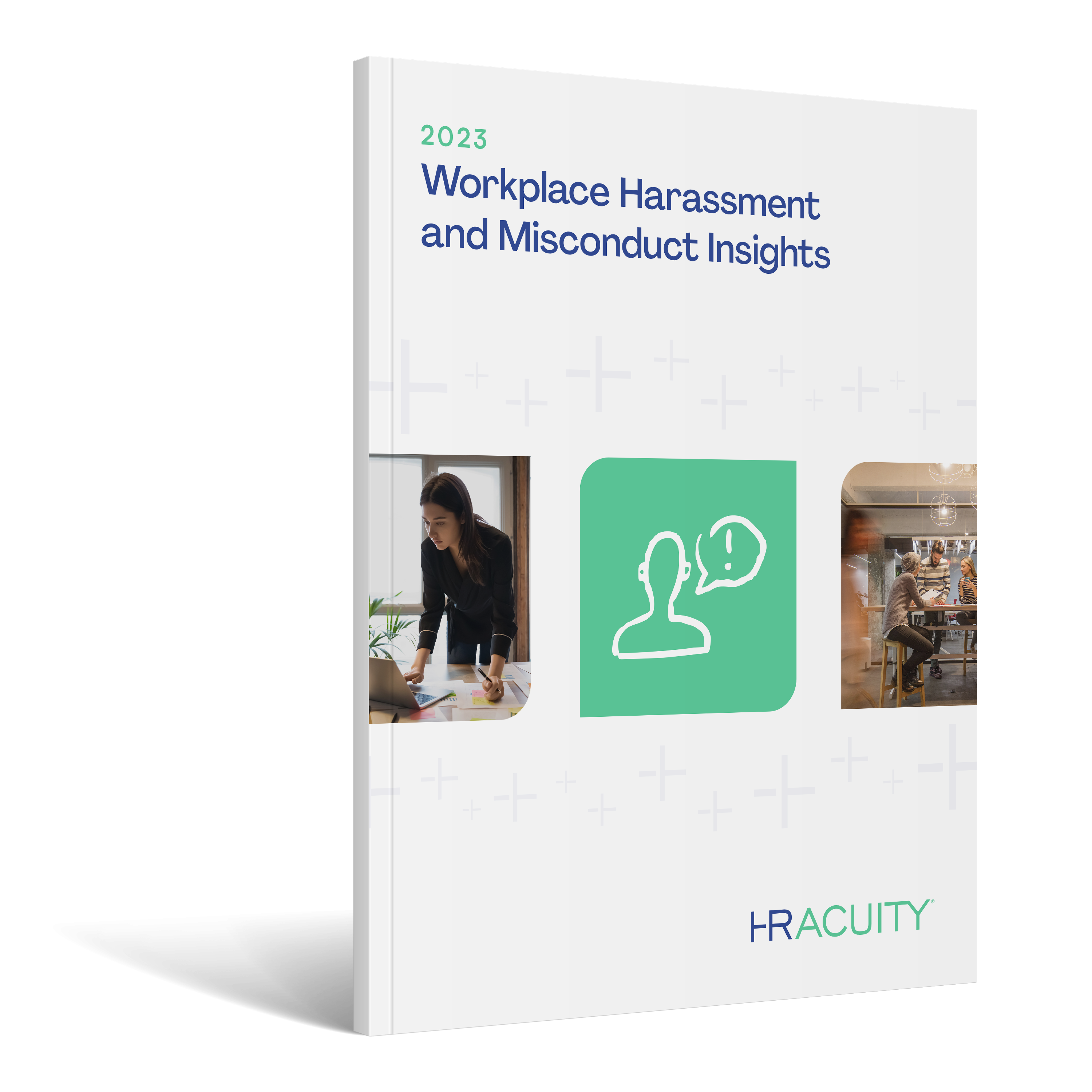
Need more information? We’d love to hear what’s on your mind!